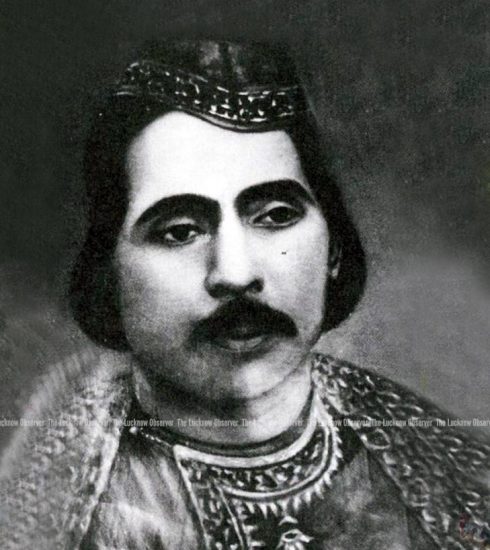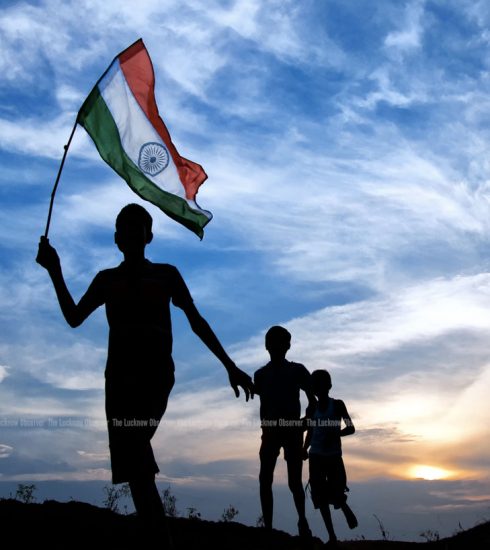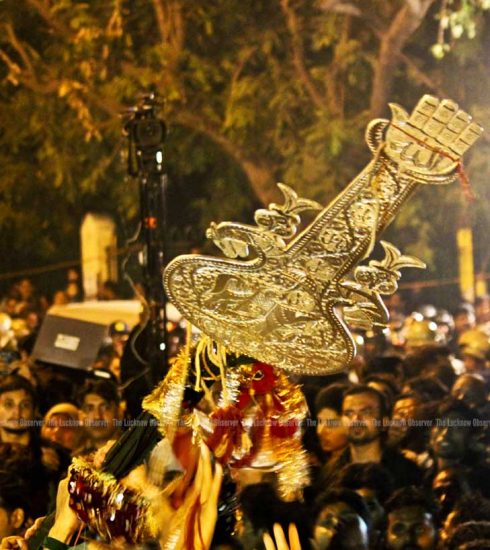Bonds of Love
Overcoming Traditions, Overcoming Religions
The morning wait in shining new clothes, hands adorned with henna holding lit and ritual thalis, the day of rakshabandhan begins thus but its preparations precede a good fifteen days or more, markets beaming with a myriad of rakhis strung in rows of inviting displays.
Rakshabandhan, the bond of protection, the bond of shared love and laughter between brothers and sisters is celebrated each year in the country in full festive fervour. The first rakhi stalls in the market announce its coming around July, the festival itself observed in the Hindu month of shravan, August on a full moon day.
Rakhis, colourful threads complete with little embellishments, flowers, paper and plastic decorations, beads, or the more elaborate jewel ones, are tied by sisters on the wrists of their brothers, making for a vow of protection-that the brother will save his sister from evils- and mutual love, renewed or symbolized in this ritual each year. Sisters do a pious aarti with an earthen lamp on the thali, put tilak on their brothers’ forehead, and tie the thread on their wrists.
To mark the auspiciousness of the occasion sweets are exchanged, brothers present their sisters with gifts in the presence of elders of the family, whose blessings they receive. It’s not only for siblings to perform this act of love and trust, people who share this loving bond, whether related or not, enjoy this occasion to celebrate and affirm their love.
A person’s first rakhi could be traced back to infancy, whether a boy or girl, and the ritual is kept through life across different places, distances, phases, rakhis entering mails, cards, travelling patient in trains, sitting smiling on rickshaws in bright new outfits or crisp envelopes with expectant stamps.
This simple ritual of beauty has deep meanings buried in the mystic and enchanting realms of Hindu mythology and history.
The Hindu holy scripture, Bhavishya Purana, one of the eighteen puranas attributed to Ved Vyas narrates the earliest tales of the possible origin of this tradition.
According to the story, once the gods were caught in a battle with demon king Bali and his armies that stretched for over twelve years. After the long years of strife the gods remained defeated by the evil opponents, Indra losing their kingdom, Amravati. The king of gods, Indradev, dejected, sought the counsel of deva guru Brihaspati. Brihaspati advised him to seek the power of a blessed holy thread for victory. Indra’s wife Devi Sachi tied the thread on Indra’s right wrist on shravan purnima in the presence of a Brahmin in full ritualistic fashion, saying the protective charm, swasti vachan or shloka in Sanskrit. Indra and his army of gods finally stood triumphant over the demon Bali by virtue of Sachi’s act.
The potent shloka still uttered by people in more traditional settings goes:
“येन बद्धोबली राजा दानवेन्द्रो महाबल:।
दानवेन्द्रो मा चल मा चल।।”.
It translates to “the thread with which demon king Bali was bound, I bound thee with the same. oh holy thread, your power is not transient, is not transient!”
Another legend involving the demon king tells how Vishnu, on defeating Bali in battle, acceded to his plea of staying in his palace, leaving Vaikunthdam. The wife of Vishnu, goddess Lakshmi was upset by the proceedings. Disguised as a Brahmin woman, she went to reside in Bali’s ashram and won him over with her dedication. She tied a thread on his wrist proclaiming her sisterly affection. When, gratified, Bali asked her to name a wish; she revealed her true identity and demanded that he allow Vishnu to return to Vaikunthdam. And thus, Vaikunthdam was restored to its natural order.
Yashoda, it is said, sang the following anthem while tying an amulet on Krishna’s wrist for protection against evil:
“May the lord of all beings protect thee, May the one who creates, preserves and dissolves life protect thee, May Govinda guard thy head; Kesava, thy neck; Vishnu, thy belly; the eternal Narayana, thy face, thine arms, thy mind, and faculties of sense; May all negativity and fears, spirits malignant and unfriendly, flee thee; May Rishikesa keep you safe in the sky; and Mahidhara, upon earth…”
The prayer is still implicit, resounding whenever that act of love is replicated anywhere.
In the Mahabharata when Krishna cut his finger while beheading Shishupal, Draupadi ran up to him and tied his bleeding finger with cloth torn from her sari. Krishna, touched by her affection and care, promised her eternal brotherly protection. He promised that whenever she will need him, he will be there to help her.
In the infamous episode of the Mahabharata when the Pandavas ‘lost’ Draupadi to the Kauravas in a game of ‘chausar’, a form of Indian chess or gambling, Krishna saved Draupadi from humiliation, fulfilling his brotherly duty and creating a legend of unfailing power.
It is also said that while Draupadi tied this protective charm on Krishna’s wrist, Kunti did so for her grandson Abhimanyu before the battle of Kurukshetra.
The mythic siblings Yama, the king of hell or narak and his sister Yamuna are also prevalent, attributing to another similar celebration around diwali in north India, called bhai dooj.
Yama did not visit his sister Yamuna, who was distressed by his neglect. On Ganga’s advice Yama finally paid a visit to his sister on a shravan purnima. Yamuna was overjoyed and expressed her happiness with vigour. Yama, guilty, and moved by her love, asked her to make a wish of him. She only demanded that he visit her often. He was so overcome with pleasure that he proclaimed that brothers and sisters who so chose to show their love for each other in this way on the purnima, will have their bond made immortal, as Yama made his own by making Yamuna immortal, so that he could forever see her.
Another trace of rakshabandhan is found in accounts about Lord Ganesha, who was visited by his sister on the occasion. Seeing this his two sons, shubh and labh (holy and profit, holy gain) were disappointed and wished that they too had a sister who could tie a rakhi on their wrists. The family squabble was calmed by Saint Narayan who advised Ganesha that a daughter would bless his household with happiness and well being. Thus, a daughter was born of Ganesha’s wives Riddhi (the incredible) and Siddhi (excellence) who satisfied their sons’ wish. Thus, Santoshi, goddess of satisfaction she was named.
History also has significance attached to the power of this bond and the practice of tying a protective thread. Rajput kings protected the women of other kingdoms, with whom they were bound by the holy thread. Women performed this act before battle, protecting their men folk thus.
The famed battle between the king of Macedonia, Alexander, The Great, on his Asian conquest and king Porus of India in 326 BC forms an interesting account. Alexander’s wife Roxanna, daunted by Porus’s might and concerned about her husband’s well being, sent Porus an appeal for her husband’s safety, beseeching him not to harm him in the battle lethally. This promise was contained in the form of a token thread, and as Porus was about to strike a final blow he saw the thread and was reminded of his promise as a brother to Roxanna . He spared Alexander keeping his word to a distant sister.
The widowed Rani Karnavati of Chittor appealed to emperor Humayun as a sister for protection against the impending siege of Bahadur Shah Zafar of Gujarat. Humayun immediately set out with his armies to keep his word and although Shah Zafar remained victorious, the faith in the bond of brother and sister was sustained.
These stories are testimony and abiding inspiration for the beauty and strength of the unique relation shared by brothers and sisters, unrestrained by age, colour, race, time or boundaries of any sort or even birth.
Nobel laureate and national legend Rabindranath Tagore aimed to capture in this festival the essential, important bond of communal harmony and brotherhood. During the colonial period when the British sought to divide Bengal on religious lines, he emphasized and patronized this festival to bond between Hindus and Muslims. Though his efforts failed, the endeavour still continues in many parts of the country in beautiful form, Hindus and Muslims, and people of other faiths exchanging the thread as a mark of love.
He wrote the following poem invoking the beauty of rakhi.
The love in my body and heart for the earth’s shadow and light has stayed over years. With its cares and its hope it has thrown a language of its own into blue skies. It lives in my joys and glooms in the spring night’s buds and blooms like a Rakhi-band on the future’s hand.
So while you observe the festival this year, imbibe its underlying significance and beauty and keep the light of love aflame.
Nikita Gupta
Writer is a student and her passion is painting
(Published in The Lucknow Observer, Volume 2 Issue 17, Dated 05 August 2015)








